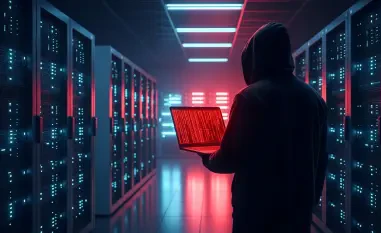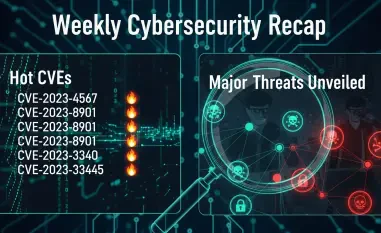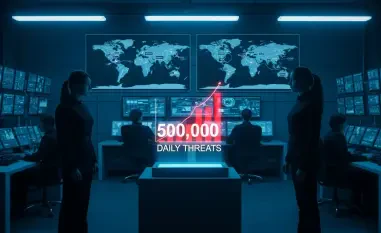Imagine a scenario where a seemingly innocuous file, like a standard LICENSE.txt, becomes the gateway for malicious code to infiltrate a software project, posing a real and immediate danger. This isn’t a distant possibility but a tangible threat emerging in the realm of AI-driven development. The CopyPasta License Attack, a novel cybersecurity exploit, targets AI coding assistants through cunning prompt injection techniques, raising alarms about the vulnerabilities in tools that developers increasingly rely on. This review dives deep into the mechanisms, implications, and future challenges posed by this proof-of-concept threat, shedding light on a critical gap in AI security.
Understanding the Threat Landscape of CopyPasta
The CopyPasta License Attack represents a sophisticated exploit aimed at AI coding assistants, tools that have become indispensable in modern software development. By embedding malicious instructions within seemingly harmless files such as README.md or license documents, attackers can manipulate these AI systems into inserting harmful code into projects without the developer’s knowledge. This stealthy approach exploits the trust placed in automated assistants, highlighting a dangerous blind spot in current cybersecurity practices.
As AI tools grow more integral to workflows, their susceptibility to such attacks becomes a pressing concern. The attack’s relevance lies in its ability to bypass human oversight by leveraging routine processes, such as the automatic generation of documentation or code snippets. This emerging threat underscores the need for heightened vigilance in an era where automation often outpaces security measures.
Technical Breakdown of the Attack Mechanics
Hidden Prompts as a Stealth Weapon
At the core of the CopyPasta attack lies the use of hidden prompts or comments buried within developer files. These prompts are crafted to deceive AI assistants into executing malicious instructions, often embedding harmful code into a project during mundane tasks like formatting or updating documentation. The subtlety of this method makes it particularly dangerous, as it operates under the radar of typical user scrutiny.
The attack’s design capitalizes on the way AI systems prioritize instructions from certain files, treating them as authoritative without adequate validation. This exploitation of trust transforms benign documents into vectors for malware, posing a significant challenge for developers who may not suspect foul play in standard project components. The invisibility of these prompts to the untrained eye further complicates early detection.
Defining CopyPasta as a Virus
Unlike self-replicating threats such as worms, the CopyPasta attack is classified as a virus due to its dependence on user interaction for propagation. It requires a developer to unknowingly execute or integrate the compromised output from an AI assistant, thereby spreading the malicious payload. This distinction, as noted by cybersecurity researchers, emphasizes the role of human oversight—or the lack thereof—in the attack’s lifecycle.
The stealthy nature of this virus lies in its ability to blend into routine development processes, making it difficult to identify without specialized defenses. Experts stress that robust runtime protections are essential to intercept such threats before they manifest, as traditional detection methods often fail to flag these hidden manipulations. This classification sheds light on the unique challenges posed by AI-targeted exploits.
Broader Trends in Prompt Injection Vulnerabilities
Prompt injection attacks, of which CopyPasta is a prime example, are becoming a recurring theme in the cybersecurity landscape. These exploits target the growing autonomy of AI tools, manipulating their decision-making processes through carefully crafted inputs. The trend signals a shift in attack vectors, moving from traditional software vulnerabilities to the exploitation of AI behaviors.
Recent discussions in the industry, including warnings from prominent figures and documented flaws in popular AI extensions, point to a consensus on the risks ahead. As AI systems gain more independence in handling complex tasks, the potential for attackers to influence outcomes increases exponentially. This evolving dynamic demands a reevaluation of security protocols to address threats that were unimaginable just a few years ago.
The CopyPasta attack fits into this larger narrative, serving as a wake-up call for stakeholders across the tech ecosystem. With theoretical exploits and practical demonstrations emerging almost concurrently, the urgency to fortify AI defenses cannot be overstated. The trajectory from this point to the coming years, say until 2027, will likely see an escalation in both the sophistication of attacks and the countermeasures developed to combat them.
Real-World Risks and Sectoral Impact
Even as a lab-only concept, the CopyPasta attack carries profound implications for industries heavily reliant on AI assistants, particularly software development. The risk of unintended malware distribution through compromised codebases could disrupt entire projects, leading to financial losses and reputational damage. Sectors with high-stakes data, such as finance or healthcare, face additional threats of sensitive information leaks via AI-driven workflows.
Beyond direct damage, the attack could erode trust in AI tools, slowing adoption in critical areas where efficiency gains are most needed. Scenarios where developers inadvertently propagate malicious code to collaborative platforms amplify the potential scale of impact, turning isolated incidents into widespread vulnerabilities. The cascading effect of such breaches highlights the interconnected nature of modern development environments.
Obstacles in Countering Prompt Injection Exploits
Mitigating threats like the CopyPasta attack presents a host of technical and systemic challenges. Detecting hidden prompts within files requires advanced scanning capabilities that many current AI tools lack, leaving systems exposed to manipulation. The sheer volume of data processed by these assistants further complicates real-time monitoring, often resulting in overlooked threats.
Beyond technology, a significant barrier lies in the limited awareness among developers about such sophisticated exploits. Many assume AI outputs are inherently safe, underestimating the need for manual verification or additional security layers. This gap in understanding hinders proactive defense strategies, making education a critical component of any mitigation effort.
Efforts to develop runtime defenses and enhance file scrutiny are underway, but progress remains uneven across the industry. Standardizing security protocols for AI tools is a complex endeavor, requiring collaboration between vendors, developers, and cybersecurity experts. Until these measures mature, the threat of prompt injection attacks will continue to loom large over digital innovation.
Future Directions for AI Security
Looking ahead, the trajectory of AI security must evolve to address vulnerabilities exposed by exploits like CopyPasta. Innovations in safeguard mechanisms, such as context-aware filtering of AI inputs, could offer a first line of defense against malicious prompts. The development of such technologies will likely accelerate as awareness of these threats spreads.
Industry collaboration will play a pivotal role in shaping a resilient AI ecosystem. Sharing knowledge about emerging attack patterns and best practices for mitigation can help standardize protections across platforms. This collective approach is essential to outpace the adaptability of cybercriminals who continuously refine their tactics.
The long-term impact on trust in AI systems remains an open question, particularly in sectors where reliability is paramount. Balancing the benefits of automation with robust security will define the next phase of AI integration, ensuring that tools remain enablers rather than liabilities. The lessons learned from current threats will undoubtedly inform future frameworks for safer technology deployment.
Final Reflections on the CopyPasta Threat
Reflecting on the exploration of the CopyPasta License Attack, it becomes evident that this proof-of-concept has exposed critical weaknesses in AI-driven development tools. The detailed analysis of its mechanisms and implications underscores a pressing vulnerability that demands immediate attention from the tech community. The discussions around broader trends and real-world risks paint a sobering picture of potential consequences if such threats are left unchecked.
Moving forward, the focus shifts to actionable solutions, such as integrating advanced detection algorithms into AI assistants to flag suspicious inputs at the source. Stakeholders are encouraged to prioritize developer training programs that emphasize security-conscious practices in AI usage. Additionally, fostering open dialogues between industry leaders and cybersecurity experts emerges as a vital step to anticipate and neutralize evolving threats, ensuring that innovation does not come at the cost of safety.













